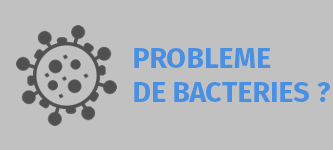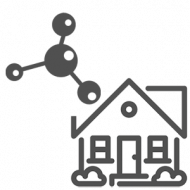| » » |
Que recherchez-vous ?
What solutions can be found to eliminate chemical contamination of drinking water?
Every day you drink about 2 liters of water, but do you know what's in it? Some we might not want to ingest, it turns out. Residues of chemicals and medications can end up in the glass of water. If you want to avoid it, there are solutions.
What are the causes of chemical contamination of water?
1. Agricultural runoff
Rain and snow don't always disappear into the ground. Instead, it flows into streams, rivers, and lakes, but it can also flow through cracks in the ground. This water is called runoff and it often absorbs pollutants as it goes. For example, if runoff water passes over agricultural land, this water can carry pesticides, fertilizers and animal manure with it. Agricultural runoff occurs whenever water flows over fields and various waterways, such as when it rains excessively or when snow melts.
This type of runoff from agriculture usually ends up in surface water sources. Contaminated rainwater is the main cause of pollution in rivers and lakes, as fertilizers can cause uncontrollable growth of toxic algae. Wastewater treatment plants may not be able to filter out all toxic substances in the event of very high algae growth. About half of all drinking water in Sweden comes from lakes and rivers.
2. Mining
The extraction of ore in mines has long had a strong impact on the nature near the mine and therefore also on the water and streams nearby. The problem with mining waste is that the waste has a different character depending on the type of ore mined. Therefore, it must be supported in different ways. It was a big problem in the old mines, but today there are many more rules to follow. However, if mining waste were to be handled incorrectly, it could lead to serious environmental problems. Weathering can result in the release of acidic, metal-rich leachate that drains into lakes and streams. Then it makes its way into our drinking water.
3. Drug residues
A growing problem that we are becoming increasingly aware of today is that the concentration of pharmaceutical residues is constantly increasing in lakes and rivers, and now it is beginning to reach levels that pose a significant risk to plant and animal life, but also for humans. Many drugs do not break down well and there is a risk of them ending up in our drinking water. This not only means that we can ingest drugs that we shouldn't be taking, but we can also ingest unnecessary doses of antibiotics, which will increase the risk of antibiotic-resistant bacteria forming.
4. Global warming - floods
Our warmer climate brings greater amounts of precipitation, which increases the risk of flooding of lakes and other waterways. In addition, it increases the risk that the aqueducts will not be able to clean the water as effectively as they should. There is also a great risk that the quality of surface water and groundwater will change because salt water enters at much too high water levels. Climate change can lead to the spread of new micro-organisms, but also to pumping stations and treatment plants that discharge more polluted water, which of course is more difficult to clean.


























































